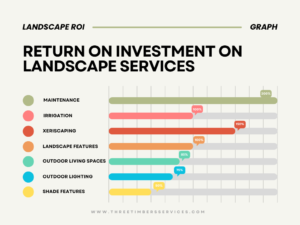
The Ultimate Guide to Weed Control in Arizona: Best Practices, Equipment, and Herbicides
Introduction to Weed Control in Arizona: A Crucial Endeavor Brief Overview of the Importance of Weed Control in Arizona Weed control in Arizona is not
Your go-to source for landscaping pro tips, how to guides, and more
In Arizona’s arid climate, maintaining an effective irrigation system is crucial for a flourishing landscape. This guide covers everything from system testing to seasonal watering tips, ensuring your garden remains lush in the Grand Canyon State.

Introduction to Weed Control in Arizona: A Crucial Endeavor Brief Overview of the Importance of Weed Control in Arizona Weed control in Arizona is not

Welcome to our comprehensive guide on achieving and maintaining a lush, vibrant lawn in the heart of Scottsdale, Arizona. At Three Timbers, we believe that

In the dynamic and ever-evolving city of Phoenix, Arizona, enhancing property value through landscaping is not just an option but a necessity for homeowners aiming

In Arizona’s arid climate, maintaining an effective irrigation system is crucial for a flourishing landscape. This guide covers everything from system testing to seasonal watering tips, ensuring your garden remains lush in the Grand Canyon State.

When selling a home in Arizona, meticulous landscape maintenance matters. From lush lawns to weed-free gardens, a well-kept exterior enhances curb appeal and demonstrates care, boosting property value and attracting buyers.

Maintaining your Arizona landscape requires specialized care due to the desert environment. From irrigation and weed control to pest management and seasonal adjustments, learn how to keep your desert landscape thriving.

Estimating the precise value increase for each landscaping category can be challenging since the return on investment (ROI) varies by region, local market conditions, the property’s baseline value, and individual buyer preferences. However, we can provide a general idea based on industry averages and expert insights.

Selling a home in Arizona for the highest price with the help of landscaping involves a combination of adding appealing features, maintaining what’s already there, and ensuring the landscaping aligns with the preferences of potential buyers in the area. Here’s a prioritized order of steps to take.

Improving the value of a home in Arizona through landscaping requires understanding the unique climate, aesthetic preferences, and sustainability concerns of the region. Here are top landscaping tips tailored for Arizona properties.
Website Design by JBC